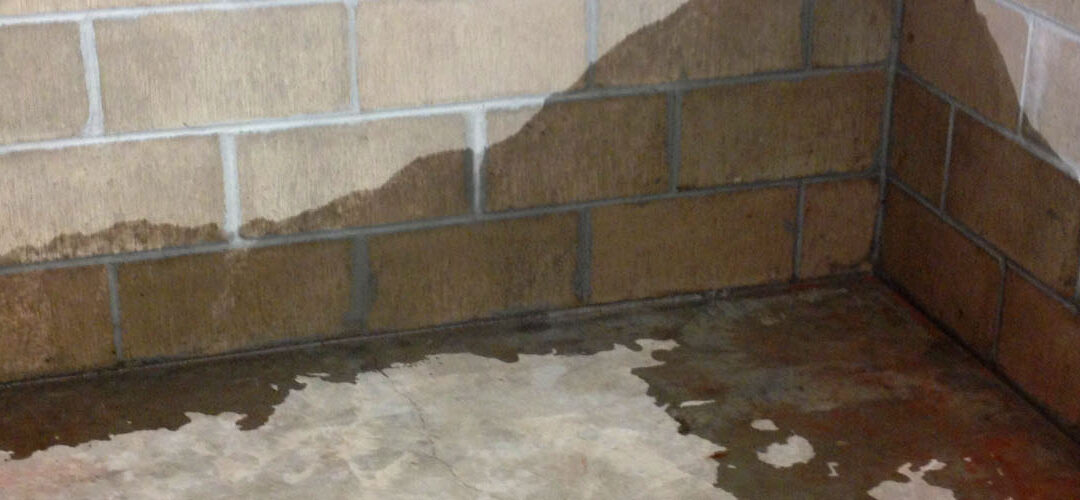It’s crucial to repair a leaky basement wall to keep your home’s interior healthy and structurally sound. Water in your basement can cause more harm than just a terrible odor; it can also cause mildew and structural problems with your home’s foundation. It’s crucial to stop these leaks before they worsen relate to Repair Leaking Basement services .
Causes of Leaks in a Basement Wall
It’s crucial to understand the causes and sources of leaks while evaluating leaky basement walls. Some of these common causes are mentioned below:
Water Table
Although it may not always appear like it, there is water present in the ground all around. Water is still underground even in dry locations, although considerably lower than elsewhere.
The “water table” refers to the elevation at which this groundwater is present, and its location varies greatly. Nearness to water bodies is one element that affects the height of the water table.
Therefore, regions around the Great Lakes, for example, will have higher water tables than Kansas or South Dakota.
Wall fissures
Hydrostatic pressure acting against basement walls can cause walls to bow or tilt. Cracks in the basement walls will let water soak through, resulting in a moist basement.
Lateral Pressure
Under normal weather conditions, the soil naturally drains. The soil surrounding a foundation between the footings and the surface can also absorb water.
Sand and loam are examples of soil types that drain relatively quickly and don’t absorb as much water. Clay soil tends to absorb water and expand while having poor drainage.
Window Wells
A window well is another source of seepage unrelated to groundwater pressure. Window wells let light and air into the basement through the window.
But water may build up during a severe downpour if the drain is blocked or not present. Water can seep in around improperly installed windows or even exert enough pressure to drive the window in when the window fills with water due to a blocked or missing drain or a detached window well liner.
How to Repair Leaking Basement Wall?
Try the following to repair leaks in the wall:
Fix the cracks
When done correctly, caulking leaky wall cracks is a long-lasting, workable fix. Finding a solution that won’t fail or peel off the wall when the wall naturally grows and contracts over time is the trick to this problem.
Controlling seepage over the top of foundation walls
The sill plate of the above-ground structure is frequently just a few inches below the top of a foundation wall. Rainwater can enter the basement through this aperture when “negative” grading or incorrectly sloped buildings, such as decks and patios, cause rainwater to stream toward the house.
Water-Resistant Wall Panels
We advise mechanically fastening basement wall panels rather than painting or coating the basement wall with a waterproof material. These wall panels will serve two purposes: they will keep out moisture and improve the room.
Repairing a Bigger Interior Basement Leak
You’ll need to install an internal waterproofing system if your basement walls are dripping significantly. Make sure the basement walls will need to have all their finished components removed. Around the internal perimeter of the basement wall, a trench must be dug or jackhammered.
Next also consider installing a weeping tile pipe, and backfill the trench with gravel. Over the entire wall, a waterproof membrane with dimples can be applied. Once this is done pour concrete over the channel with the tile and membrane.
Any water that escapes through the walls will pass through the membrane, will enter the tile, and then be dumped outside the house by a sump pump set up in the pit that the tile drains into. We recommend hiring professionals for the job since they have the right experience and expertise to do that in terms of Repair Leaking Basement.
Guidelines for Maintaining Dry Basement Walls
Numerous quick repairs may be used to keep your basement as dry as possible, and most of them are doable by almost every homeowner. Try these methods to keep your basement dry before excavating the foundation along with Repair Leaking Basement.
- Clear out your gutters. Water pools near your house where it wasn’t intended to pool as a result of clogged drains, causing water to overflow your gutters in places you don’t want it to. Basement leaks are frequently caused by gutter failure.
- Downspouts should be directed as far away from your house as possible. Ensure the water is delivered on a slope far from your home. The depth of the water should be at least 8′.
- Always ensure that the earth slopes away from home, ideally by at least 12 inches per foot for a distance of 10 feet or more. Use topsoil and a metal rake to build up parts. Tamp down the topsoil to make a gradient for surface water to travel away from your home.
Related Blog Posts:
- Top 3 Dos and Don’ts of Waterproofing Your Basement Walls
- What is Basement Waterproofing?
- Knowing the Top Three Basement Waterproofing Methods
- Causes of Basement Leaks and Water Seepage
- What Should I Do About the Cracks in the Basement Wall?
- Basement Cracks Repair: Do It Yourself vs. Hiring a Pro
- Signs of Water Damage in the Basement Walls
Related Services:
Our service areas:
Get A Free Estimate

